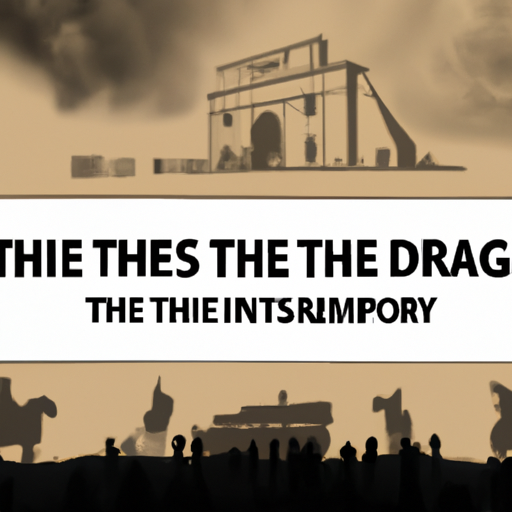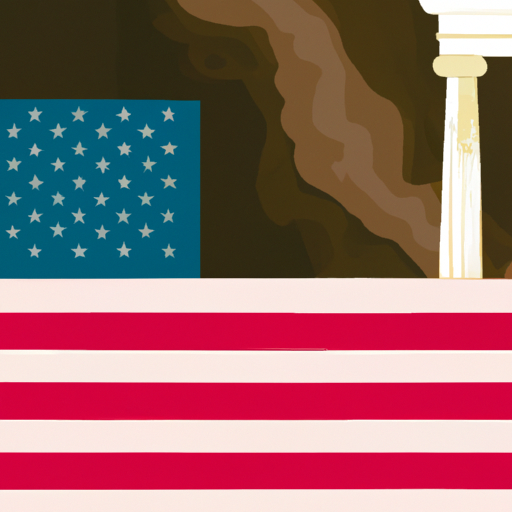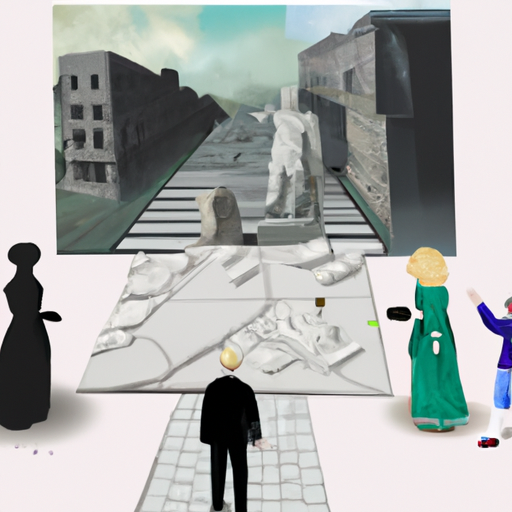A Historical Look at the Dark Side of Victorian England
Delve into the depths of a mysterious bygone era, and examine the intricate layers of Victorian England. Unearth its hidden secrets and discover a land steeped in darkness and shrouded in intrigue. Delve deep into its past to uncover the truth about this enigmatic time period.

A period of immense transformation, the Victorian era of England is a complex and captivating subject. From 1837 to 1901, Queen Victoria’s rule saw industrialization, urbanization, scientific advancement and technological breakthroughs blossom across Britain. Even so, class disparity remained deeply entrenched, creating an environment of affluence for some while leaving many in poverty.
The Victorians are remembered for their stringent moral code as well as their preoccupation with etiquette and decorum. Additionally, they had a passion for artistry, literature, fashion, music, theatre and architecture; Gothic Revivalism being especially popular during this time period – still visible in some of the grand edifices constructed then.
It would be remiss to ignore the darker aspects of Victorian England; the Industrial Revolution bringing on appalling working conditions for those living in cities or employed in factories or mines. The exploitation of child labor was also rampant throughout the country where children were sent to work from an early age to support their families.
Victorian England’s history is replete with stories of bravery and tenacity as well as accounts of tragedy and distress. It is a multifaceted era that has significantly impacted our modern world and continues to astound historians today.
.
Introduction

A time of British history shrouded in shadows and despair, the Victorian era was a period of immense poverty, inequality, and injustice. Rapid urbanization due to the industrial revolution caused overcrowding and pollution, while inadequate public health care and sanitation led to high mortality rates among the working classes. This disparity between the wealthy upper classes and those living in destitution only widened, with the lower classes facing exploitation and deprivation daily. Women were largely denied access to education or political representation during this time as well. In spite of its many accomplishments, it’s a side of Victorian England that must be recalled when reflecting on its past.
– Historical Impact of Industrialization in Victorian England
The late 18th century saw a transformation in England, from an agricultural to an industrialized society. This period of industrialization was characterized by a surge of technological progress, mechanization of production processes, improved transportation networks and infrastructure investments. These changes sparked a prodigious rise in productivity, as well as a shift from traditional farming methods to more efficient manufacturing techniques.
The effects of industrialization on Victorian England were far-reaching and momentous. The economy skyrocketed with the emergence of new industries and the expansion of existing ones, leading to higher wages for workers and access to consumer goods for all classes of society. Additionally, factories provided employment opportunities for previously unemployed individuals.
Industrialization also had a substantial impact on social structures; women were given more autonomy through factory labor while cities grew rapidly as immigrants sought work in factories or other related industries. In terms of politics, the working class gained greater influence over government policies due to their newfound economic power while the upper classes maintained control over political decision-making processes through their wealth and influence over industry owners and investors.
All in all, the reverberations of industrialization on Victorian England are indelible; it irrevocably altered the country’s economy, social structures and political systems.
– The Social Inequality of Victorian England
The Victorian era in England was a time of great disparity, with the rich and powerful enjoying an abundance of privilege and luxury while the lower classes toiled in poverty and deprivation. The Industrial Revolution brought wealth to the country, but it was not evenly shared; this widening gap between those who had access to resources and those who did not resulted in a situation where working class people were subjected to long hours of labor for meager wages in hazardous conditions. Young children were often forced into labor, and without educational opportunities available to them, there was little hope for improvement.
Meanwhile, those at the top of society lived lives of opulence that were out of reach for most people. They had access to luxurious homes, exclusive schools and expensive healthcare that served as a reminder of their power over others. This inequality created a divide between those who could benefit from it and those who couldn’t, leading to social issues that have been felt throughout generations since.
– The Exploitation of Child Labour in Victorian England
A dismal chronicle of child exploitation in Victorian England, a period marked by the use of children as an inexpensive source of labour in factories and mills, with long hours and meagre pay. This was caused by the need for increased production and higher profits, taking advantage of the lack of legal protection for children at that time. The range of work available to them was broad, from factory work to domestic service to street sweeping or chimney cleaning.
The conditions endured by these young workers were often appalling; long hours and inadequate safety measures leading to physical exhaustion and serious injuries. There was no minimum wage or age limit on employment, enabling even the youngest children to be exploited by unscrupulous employers. And without access to education, poorer families had no alternative but to send their kids out to earn money.
Fortunately, reforms enacted during the late 19th century began to improve the lives of child labourers. Laws limiting working hours and introducing compulsory schooling for 5-10 year olds led to a decrease in child labour exploitation in Victorian England – though it still remains a problem in some parts of the world today.
– Historical Analysis of Poverty and Homelessness in Victorian England
The 19th century saw a time of both great wealth and immense deprivation, a consequence of the industrial revolution. Census records, newspaper articles, memoirs, and official documents can all provide insight into this era’s poverty and homelessness. An influx of people from rural areas to cities in pursuit of work opportunities caused overcrowding in these metropolitan areas; this was further exacerbated by an insufficient housing stock, leaving many living on the streets or in slums. The number of impoverished individuals rose due to high prices, low wages, unemployment, and changes to welfare benefits – creating a cycle of hardship that was hard to break free from. Additionally, those without homes were frequently subject to police harassment or criminal proceedings for asking for money or being homeless. Nevertheless, some managed to better their situations through grit and determination. To sum up, Victorian England’s history with poverty and homelessness is complex and multifaceted.
– Historical Analysis of Poor Working Conditions in Victorian England
The 19th century brought with it a period of drastic change in England, as industrialization and urbanization altered the labor force and consequently, working conditions. This essay will explore the historical context of these changes and analyze their impact on the working class.
The Industrial Revolution had an immense influence on society and labor practices, leading to a decrease in skilled craftsmanship and an increase in unskilled labor. Factories were popping up everywhere, often employing children as young as five due to their small size and low wages. Consequently, wages were severely diminished compared to pre-industrial levels.
Urbanization was another factor that contributed to poor working conditions during this time period. With people migrating from rural areas into cities for work, overcrowding became a major issue. Living spaces were cramped and there was little access to sanitation or medical care; long hours and hazardous working environments only worsened the situation for workers.
In order to address these issues, the government passed various pieces of legislation such as the Factory Act of 1833 which limited the number of hours children could work each day while also introducing mandatory education for those under 18 years old. Other laws mandated employers provide basic safety measures such as ventilation systems in factories and adequate lighting underground mines.
It is evident that Victorian England was a challenging place for workers during this era due to industrialization, urbanization, and inadequate government regulation; although some progress was made through legislation such as the Factory Act of 1833, much more needed to be done in order to improve living standards for the working class population during this time period.
conclusion

A period of great disparity engulfed Victorian England, with the wealthy elite controlling a vast majority of wealth and authority. This had a tremendous consequence on the history of England, resulting in an upsurge of poverty and criminal activity, as well as a surge in political unrest. The era also gave rise to some of the most abhorrent slums, which were filled with squalor and disease. In spite of these difficulties, numerous advances were made in science, technology, industry and culture during this time frame.
.
Some questions with answers
Q1. What was the dark side of Victorian England?
A1. The dark side of Victorian England included poverty and inequality, industrialization and overcrowding, health issues, child labor, and inhumane working conditions.
Q2. How did poverty affect Victorian England?
A2. Poverty was a major problem during the Victorian era as the population grew rapidly and wages did not keep up with inflation. This resulted in many people living in extreme poverty with inadequate housing, poor nutrition, and limited access to education and healthcare.
Q3. How did industrialization contribute to the dark side of Victorian England?
A3. Industrialization led to overcrowding in cities as people moved from rural areas to work in factories or seek employment opportunities. This overcrowding caused pollution and other health issues due to lack of sanitation facilities or clean water sources.
Q4. What were some of the issues related to child labor during this period?
A4. Child labor was common during the Victorian era as children were seen as cheap labor that could be exploited for long hours with little pay or benefits. Children were also at risk of being exposed to hazardous materials or dangerous machinery.
Q5. How did workers suffer under these conditions?
A5. Workers suffered from low wages, long hours, unsafe working conditions, and limited job security which often led to exploitation by employers who had little regard for their employees’ welfare.




